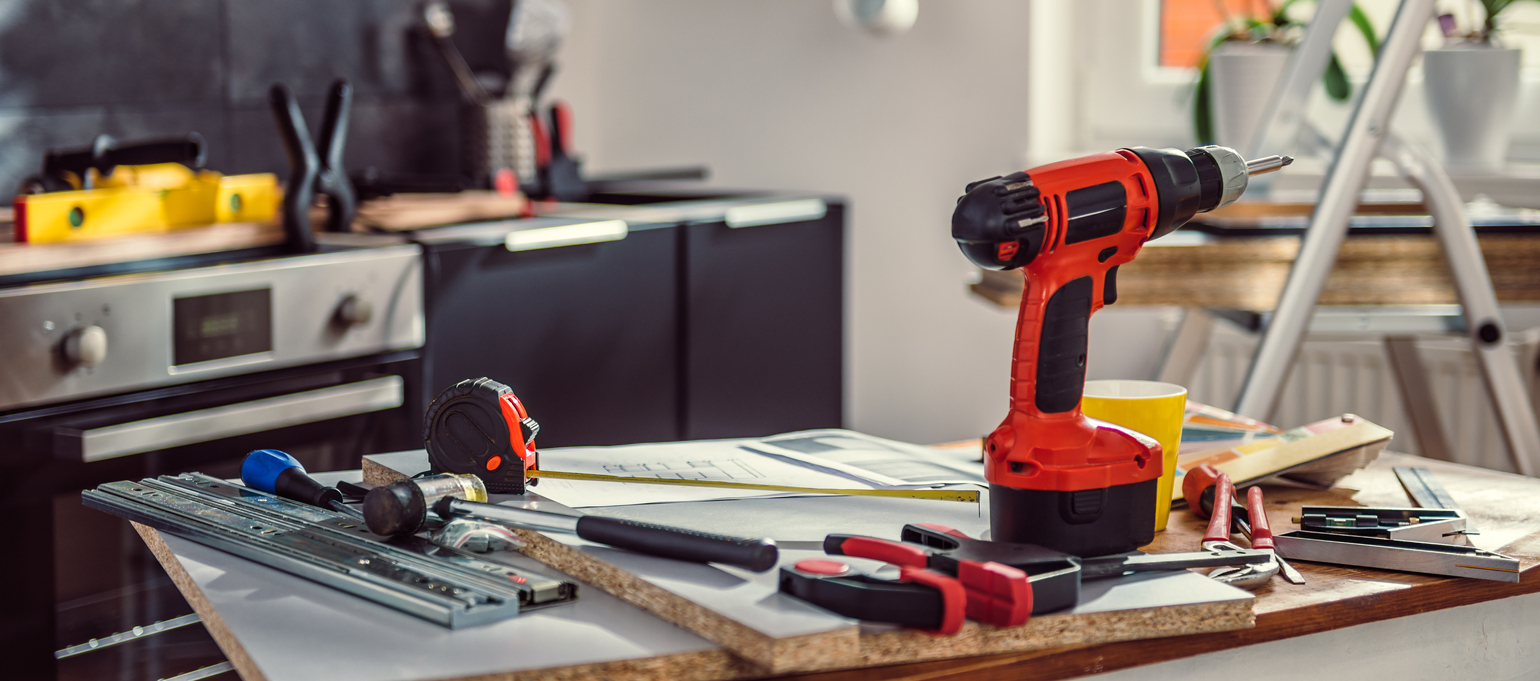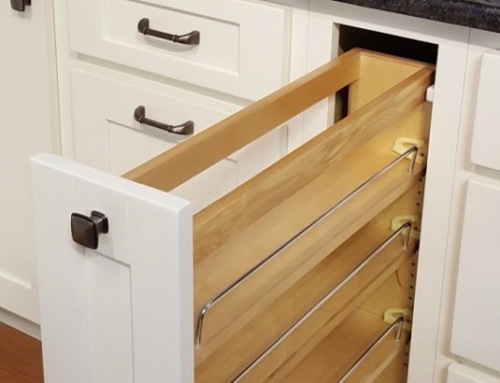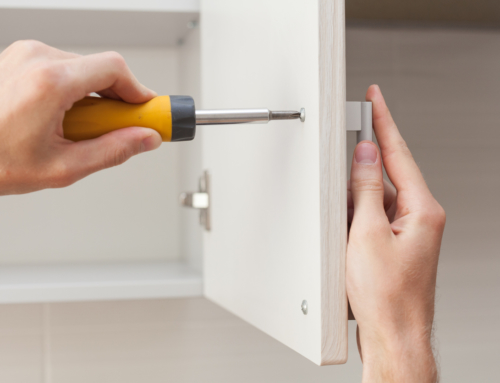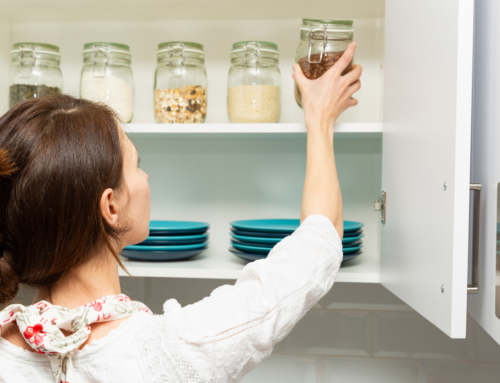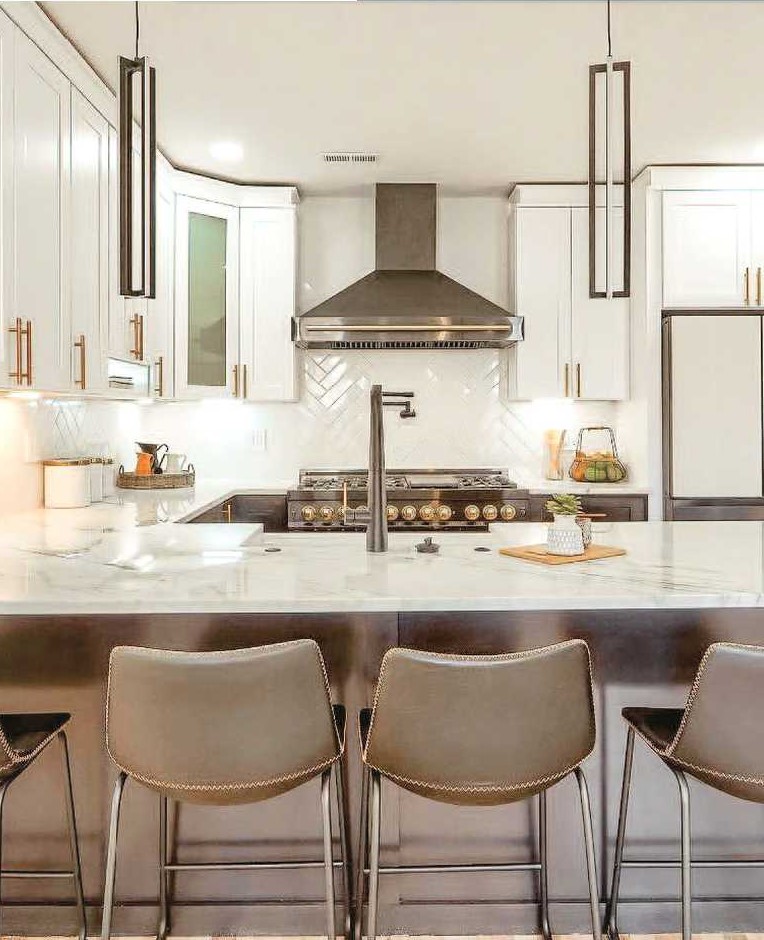Nothing good lasts forever, and that includes the appliances and equipment that you may have already replaced during recent kitchen updates. While your kitchen will look gorgeous when everything is brand new and state-of-the-art, that shiny new look doesn’t last forever. Sooner or later, you’ll need to invest in replacements or repairs to keep everything up to par.
When contemplating kitchen updates, it’s important to understand that even if you think functionality is still intact, there may be issues lurking under the surface. Here’s what you need to know about maintaining the state of your kitchen.
When Do You Need a New Dishwasher?
Replace As Needed – Every 10 Years at the Latest
For many households, dishwashers are indispensable, providing a valuable way to reduce post-meal tasks and improve overall cleanliness. However, dishwashers get old, break, and need replacements during kitchen updates, just like any other appliance.
Modern dishwashers are designed to last around 10 years, but if you start seeing these signs of wear and tear issues before that point, it may be time to invest in a repairman or a new dishwasher:
- Rust on the exterior that can indicate a water leak that isn’t necessarily visible
- Standing water in your dishwasher, indicating a serious clog
- A door that doesn’t properly latch or lock
- Cold dishes following a cycle
- Cracks or damage to the door or frame
- Leaking water on the floor under the unit
- Dishes that are spotty or dirty after a wash cycle
In some cases, a repair or parts replacement can fix these issues, but most of the time, a full replacement is the best option. Replacing a dishwasher will increase energy efficiency and improve the quality of your kitchen cleaning endeavors.
How Long Do Refrigerators Last?
Replace As Needed – Every 10 Years at the Latest
It’s hard to imagine living in a modern home without a refrigerator, which is why prompt repairs or replacements are so important. When refrigerator parts are on the fritz, it can cause plenty of issues, including ruined food, wasted money, and the risk of bacteria development, which can cause food poisoning such as salmonella.
The average lifespan of a refrigerator is about 10 years, but these signs can be indicative of a need for a timely replacement:
- Excessive condensation; in some cases, this can be remedied by a new door seal
- A motor that runs too hot
- Food that spoils faster than normal
- A freezer that is far too cold and leaves an ice buildup on items or causes freezer burn
- Excess energy use with no changes in habits
- A loud motor
- Uneven cooling, including freezing within the fridge space
It’s not uncommon for attachments such as ice machines or water filters to break after three to five years. If you live somewhere with a hot climate, it’s crucial to stay up to date with these smaller repairs. However, if your refrigerator has broken parts and kitchen updates are a priority, a full replacement may be the best option.
When Is a New Stove Essential?
Replace Every 10 Years at the Latest
Cooking is virtually impossible without a functional stove or oven, but this stable kitchen appliance doesn’t last forever. If you are in need of a new range, these tips can guide your decision between replacing and repairing.
Like most kitchen appliances, a lifespan of 10 years or more isn’t uncommon. However, if you’re seeing signs of trouble and your stove is more than a decade old, replacement is most likely the right choice, especially if:
- The glass is cracked
- One or more burners won’t light, or won’t heat up properly
- The oven heats unevenly, with particular areas heating faster than others
- Preheating takes longer than usual
- Burners are uneven
- There is a strong smell of gas in gas units, indicating a potential leak
Even if a repair is possible, it may not be worth the investment. If the cost of the repair is 50 percent or more of the cost of the unit, it’s time to take on something new.
Timelines for Countertops and Cabinet Installation
Update Every 10-15 Years
Despite common perception, counters and cabinets aren’t meant to last forever. After excessive use, counters wear down. Eventually, cupboard doors don’t close properly and shelves begin to buckle and bend. Every 10 to 15 years is generally the recommended time frame for a full kitchen remodel. Whether the functionality of your kitchen isn’t meeting your needs, or you simply want an updated look, it may be worth considering a kitchen remodel.
Countertop Replacement
While the functionality of cabinets can actively disturb storage and the protection of your cooking utensils, countertops rarely interfere with function, no matter how old they are. However, the look and feel can decrease the value of your cooking space, and it’s possible for cracks to hold bacteria before any kitchen updates. If your counter is cracked, stained beyond repair, has any signs of structural problems, or simply looks outdated, it’s time for a countertop replacement.
Cabinet Installation
Unless your cabinets are significantly newer than your countertops, it’s recommended to replace both at the same time, with cabinet installation taking priority. When cabinets are installed first, you can be sure new countertops will fit around or on your new cupboards and will not be damaged during the process.
Replacing Microwaves and Small Appliances
Replace As Needed – Every 5 Years at the Latest
Unlike large appliances like refrigerators, stoves, ovens, and dishwashers, most smaller appliances won’t make it to a decade of life. As such, you may need to replace things like microwaves on a more accelerated basis.
Microwave
Your microwave should hold up for at least five years, but inexpensive models may only give you a year or two. Signs like smoke, sparks, burning smells, improperly cooked food, suspicious sounds, and trouble with controls often mean it’s time for a replacement.
Microwaves can be repaired, but the cost is often not worth it. When in doubt, a new microwave is generally a better deal, with prices averaging around $100 or less–a steal compared to larger appliances.
Toasters
Toasters and toaster ovens can be important for convenience and easy cooking, particularly for meals that don’t necessitate the time commitment preheating the oven requires. However, like microwaves, these items aren’t meant to last longer than around five years of regular use, either. If you see sparks or smoke, experience uneven cooking, or smell strong metallic scents, it’s time for kitchen updates and potentially a replacement.
Stand Mixers
Stand mixers can make baking fast and simple, but they’re big investments. As such, most people are hesitant to drop cash on a replacement. Little things, like worn gears, may require simple parts repairs that you can do yourself, but bigger problems, like cracked stands, power troubles, or strange smells, usually entail a new unit.
Before jumping the gun, be sure to check the warranty. Some units may come with long-term protection that you can use to minimize or eliminate the cost or a replacement.
How Long Do Spices Last?
Between 1-5 Years
Spices are a staple in any kitchen, but contrary to the habits of standard home cooks, spices don’t last forever. Even though spices are generally dried and intended to be preserved, they do come with an expiration date. Here are a few guidelines for how long spices last:
- Whole spices should be replaced every four years
- Ground spices should be replaced every two to three years
- Herbs should be replaced every one to two years
Spices don’t actually spoil and are unlikely to make you sick, but they do lose flavor and effectiveness, compromising the food you cook.
Common cooking oils, like olive oil or canola oil, should be replaced every one to two years. In theory, white kosher and sea salt will last indefinitely, but table salt should be replaced every five years.
When to Throw Away Non-Stick Pans
Replace Every 5 Years
Pots and pans, particularly non-stick varieties, do need to be a part of your regularly scheduled kitchen updates. Based on the chemicals used to manufacture the non-stick surface, non-stick pots and pans shouldn’t be used for more than five years. If there are any scratches or the surface begins to peel, replacement should be expedited.
A great kitchen has a lot to offer your quality of life and your diet, but maintaining functionality means proper replacements. From broken appliances to outdated countertops, it’s up to you to keep your kitchen in perfect working order.


